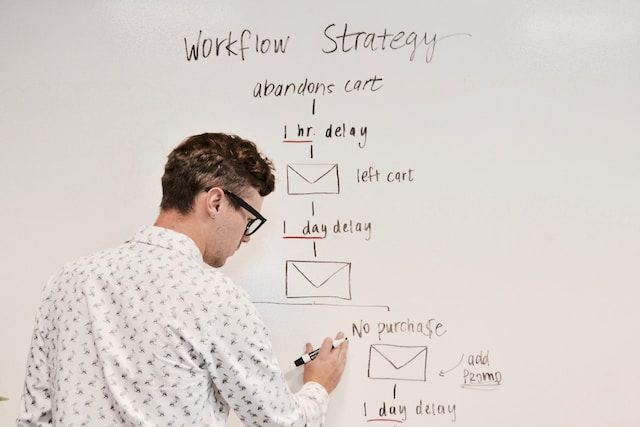Top-down processing is a term in psychology that refers to a process in which the brain sends the stored information to the sensory system for further interpretation. It takes into account the previous knowledge and varying perceptions collected from certain frameworks known as schemas.
Top-Down Processing
This process — first introduced by Richard Gregory in 1970 — starts from a more generalized way of gathering information towards forming its specific interpretation. Further, it’s a stepwise process in which the brain receives data from sensory perceptions which are later analyzed based on prior knowledge. It includes the following steps:
Sensory data → Knowledge stored in our brain → Inferences about the outer world → Perception and action
The information gathered by our senses is composed of varying factors and environmental influences. It cannot be considered accurate for research purposes unless all the aspects related to it are studied and analyzed. There can be flawed interpretations, carelessness, altering points of view, change of priorities, etc.
Instead, the theory put forth by Gregory focuses on the use of existing knowledge and recollection of previous experiences to compose well-researched and factual data. It’s a far more productive approach than investing energy in perceiving each sensation separately.
Furthermore, this approach focuses on higher mental processes like expectations, beliefs, social values, etc. Of course, one cannot be attentive to each stimulus amongst the countless stuff we gather daily. Thus, the extraction of the most meaningful data is one big task. To aid in this process, the top-down approach proves to be helpful.
Why Do We Use Top-Down Processing?
Top-down processing is used for the interpretation of information constructively. It includes analysis based on gathering past experiences for devising a well-researched and validated hypothesis.
The sensory information cannot provide exact knowledge that might be lost during the time of perception. Therefore, this approach has been developed to simplify and quickly pick the essence of what has been perceived.
Human senses do not necessarily gather accurate information and there is always a chance of confirming it through multiple ways. The top-down processing approach provides a well-organized set of patterns used to modify the information and make it more authentic.
Due to our limited perceptions, we may not be able to view a complete picture. To bring clarity to our understanding, this process is useful. Presenting complex concepts in a simplified form requires great capabilities and effort, but becomes easier when there is a pre-planned process for interpreting and refining data.
Influential Factors

Gregory proposed different factors that influence top-down processing. They include motivation, culture, expectations, environment, and emotions, etc. This is popularly known as Perceptual Set Theory.
Context is very important to understand how we perceive information that may vary when gathering it through a different context. Situations differ and affect the perceptions in varied settings. Every individual has a different way of perceiving similar things due to a range of factors.
Likewise, motivation is a very important factor that can contribute to gathering more useful information. If there is a lack of motivation, the brain may not work properly and there will be negative influences. Motivation proves to be quite supportive towards interpreting accurate and meaningful information.
Emotions directly affect the way we receive information through our senses. During low moods, an individual is not many alerts towards the details and there are chances of missing out on useful data. If there is a stable mental state, one can gather useful data and apply it for diverse purposes. Thus, emotions are of great value and an emotional balance leads to successful top-down processing.
Culture and environment also have a strong impact on what kind of information is being gathered and how it affects our stimuli. All these factors contribute to formulating data that has been filtered through various stages to reach a final form. It does require more analysis and support from past experiences to bring more meaningful information.
Examples of Top-Down Processing
There are a variety of examples that explain how top-down processing works. They include the Stroop Effect, typographical errors, the Bayesian approach, visual illusions, and more.
STROOP EFFECT
This helps in enhancing one’s ability to perceive information and process it quickly. It sharpens the senses and brings lots of fun.
It’s a kind of game in which a list of words is shown to individuals to interpret a color’s name. What makes it difficult and confusing is that the players are required to tell the ink’s color rather than the word; if the word ‘green’ is written using red ink, they should focus on the color red while ignoring the word.
TYPOGRAPHICAL ERRORS
They are commonly known as typos and indicate an errored text or a mistake. While writing, the brain tricks an individual into reading what he is expressing, hence, there will be chances of typos. No content can be completely error-free (unless thoroughly reviewed) just like an essay writer requires proofreading. The interpretation required to correct it involves the top-down process.
BAYESIAN APPROACH
This is a combination of bottom-up and top-down processing and emphasizes utilizing the senses as well as previous knowledge to interpret information. Without past experiences, one cannot come to an authentic conclusion. It involves a careful understanding and balance of prior stimuli as well as current sensory stimuli.
Conclusion
Top-down processing helps in collecting factual and thoroughly analyzed information. The information is then interpreted by taking previous knowledge into account and modifying it for depth of understanding.
Further reading:


